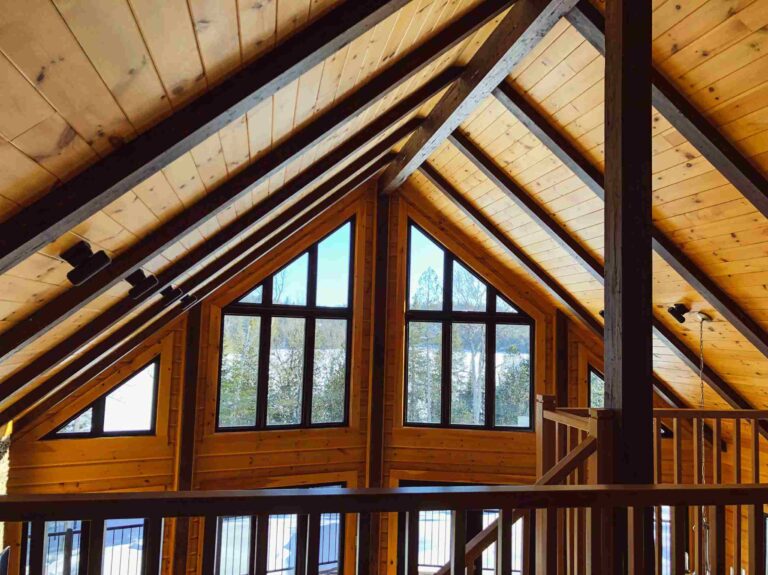The uses of wood in construction are numerous, mainly because it is one of the most versatile and durable materials available. Wood has been used historically to fill the roles of both structural members and cladding material.
The earliest man-made structures were wooden posts or beams coated in mud or clay with adobe bricks. It was not until the late 1800s or early 1900s, when steel and concrete began to gain popularity, that wood’s use as a structural material fell out of favor.
Wood is often cited as being a sustainable material because it is renewable and recyclable. However, there are some advantages and disadvantages to using wood for building purposes.
Table of Contents
Advantages of wood over other building materials
These are the benefits of using wood as building material.
Strong and durable
Wood is strong and durable. It has been used for centuries for everything from houses to furniture because it is strong and easy to work with. Plus, it can be cut into any shape, which makes it ideal for custom designs that require curves or angles.
Renewable and recyclable
Wood is renewable and recyclable, so it has little impact on the environment. Especially, if you choose to reuse it instead of demolishing your home once it has reached the end of its useful life.
In addition, once you’ve removed all usable wood from your house (either through salvage or demolition), you can use the remaining pieces as mulch or firewood.
Dispersion of heat efficiently
One of the main advantages of wood is that it is an excellent insulator for heat. This means that it can prevent heat from escaping, which helps keep the temperature in your home or building at a comfortable level. When you build with wooden materials, you can help reduce your heating bills by keeping more heat inside and preventing outside air from getting in and cooling things down.
Wood has a higher thermal conductivity than other materials, such as steel or concrete. This means that it will be able to transfer heat energy more quickly than other types of construction materials.
Wood is easy to work with
It is also easy to work with because it can be easily shaped into any form needed for construction purposes.
The versatility of wood makes it an excellent choice for use in a wide variety of sustainable and green homes and commercial buildings. We can use it for structural, load-bearing, and finishing purposes.
Lightweight
Wood has a low density compared to other building materials, such as steel or concrete. As a result, you can use less wood than you would need of another material when designing a structure that needs to support a given weight load.
Expands without cracking
Wood expands and contracts with changes in humidity levels without cracking like some other building materials do when they are wet or dry out too much or too fast.
This makes it a good material for use in log homes because it will last longer. Especially if you care for it properly by keeping it well-sealed against moisture and insects.
Disadvantages of wood for buildings
The following are some of the disadvantages of using wood as building material.
Cost
Wood tends to be more expensive than other structural materials, such as steel or concrete. In addition, wood does not have the same strength as other materials. So reinforcement is needed with other materials, such as steel beams or concrete slabs, before using it as part of the structure of the building itself.
Durability
Wood rots over time due to moisture penetration into its cells. This causes cracks in the material that weaken its integrity over time. Cracks make it unsuitable for structural use unless treated properly before installation.
In addition, rainwater can cause damage by seeping into cracks in wood structures and weakening them further over time by causing more cracks or split within an entire structure if not treated after being built.
The main cause of this is the natural decomposition of wood by fungi and bacteria in moist environments. This process causes a breakdown in the cell walls, making them more porous and allowing water to enter and degrade the material further.
Destructible
Wood also burns easily in fires, which can cause serious damage or even loss of life. In order to combat this problem, many modern buildings have sprinkler systems installed to automatically extinguish any fires that break out inside of them before they get out of control or spread too far throughout the building itself.
As a natural product, wood has many benefits as well as some disadvantages
Wood is a natural product and renewable resource. Wood is also sustainable, meaning that if enough care is taken to harvest trees in a way that doesn’t damage the forest ecosystem, their harvest can happen again after a few decades.
Wood’s relative lightness makes it an excellent insulator. It keeps heat inside and cold out better than other building materials (depending on what kind of wood you’re using).
Wood also has good acoustic properties. You’ll hear less noise when walking around inside a wooden house than a brick or stone one. Finally, because of its strength-to-weight ratio, we can use it to build all kinds of structures.
Read also: The top 10 greenest skyscrapers in the world












